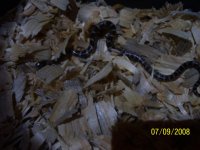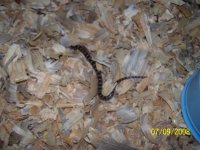-
Hello!
Either you have not registered on this site yet, or you are registered but have not logged in. In either case, you will not be able to use the full functionality of this site until you have registered, and then logged in after your registration has been approved.
Registration is FREE, so please register so you can participate instead of remaining a lurker....
Please be certain that the location field is correctly filled out when you register. All registrations that appear to be bogus will be rejected. Which means that if your location field does NOT match the actual location of your registration IP address, then your registration will be rejected.
Sorry about the strictness of this requirement, but it is necessary to block spammers and scammers at the door as much as possible.
You are using an out of date browser. It may not display this or other websites correctly.
You should upgrade or use an alternative browser.
You should upgrade or use an alternative browser.
Is this a corn snake?
- Thread starter stuckonstoopid69
- Start date
Toshiro
scoffindustries.be
It ain't a Cornsnake mate.
That was my first thought.
The snake's neck was telling me "no"
but then doubt came along..
t3ch
Desert Diamondback
It's all about the patterns. When I first started school I couldn't, but then the more you handle them and see, it gets easier.How do you tell the difference between an eastern milk and a baby black rat??
Notice the snake pictured has large blotches, with alternating under blotches. Kind of like zig zag blotches. Have a look at some juvenile black rats, they're blotches are more broken up for the most part. Also, color. Most black rats are greyish in color even as a juvenile, this snake has visible red and that milky color. Finally, the head pattern. For the most part, it's a pretty reliable ID. There are way to many differences to list, but these are the most apparent in the photo.
stuckonstoopid69
New member
ok now my next question, are they acceptable pets?
KJUN
Well-known member
ok now my next question, are they acceptable pets?
It's a milk (it's a common misidentification problem for newbies, but they actually are very different looking from the entire ratsnake-complex!), and they make OK pets if (1) it is legal for you to collect it from the wild, (2) if feeds on pink mice (it MAY not at that age), and (3) you make sure it is healthy and not full of parasites since it is a WC animal.
KJ
t3ch
Desert Diamondback
Pretty much what KJUN said, make sure it is legal. I'm in school now for Forestry and Wildlife conservation, and the last thing you want is a Conservation officer at you door, trust me.
With that said, I have a WC Milk Snake that I found here in CO, and it's a great pet. Here is a really good article on them.
http://www.boatips.com/milksnakes/
Although WC snakes don't make the best pets, they can be just as good as long as you take care of them(provided they eat, as KJUN said). It's also important to note, if you have any other snakes, keep it away from them. WC snakes often have parasites, and can kill it and your other snakes. The best thing to do is take it to a vet to help asses it's health. If this isn't an option, consider releasing it(where you found it) or keeping it completely separate from your other snakes.
With that said, I have a WC Milk Snake that I found here in CO, and it's a great pet. Here is a really good article on them.
http://www.boatips.com/milksnakes/
Although WC snakes don't make the best pets, they can be just as good as long as you take care of them(provided they eat, as KJUN said). It's also important to note, if you have any other snakes, keep it away from them. WC snakes often have parasites, and can kill it and your other snakes. The best thing to do is take it to a vet to help asses it's health. If this isn't an option, consider releasing it(where you found it) or keeping it completely separate from your other snakes.



